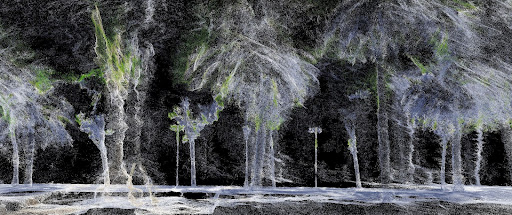IAAC – Master in Robotics and Advanced Construction
Studio II
Faculty: Aldo Sollazzo
Guest/Visiting Faculty: Keith Kaseman
Faculty Assistants: Maria Espina, Oriol Arroyo.
SENSING MACHINES STUDIO

Credits: Noumena
Syllabus
Today, emerging technologies offer tools to inform design strategies, unveiling dependencies, common patterns, and associations of spatial dynamics, through a data-driven protocol of observation and analysis. Data has become an undeniable force capable of revamping stagnant AEC sectors, redefining existing protocols and introducing new ones while stretching its roots in all principal stages from conception to construction.
In such a context, sensing technologies enable the digitization of physical matter and spatial dynamics, enhancing deeper comprehension of material properties, informing novel design and fabrication mechanisms, performance-based simulations, on-site construction protocols and automated monitoring methods.
Nowadays, advancements in machine learning and computer vision can provide the capacity to turn spatial dynamics into visible patterns, tracing movements, classifying spatial usage, monitoring interactivity, performance, and materiality. Nonetheless, as technology progresses, it becomes crucial to define criteria, calibrate metrics and set protocols to inform and support decision making.
How to configure these systems to support designers, architects, urban planners, and others in shaping more resilient, sustainable, and efficient habitats? How may sensing technologies be leveraged to weave data extracted from physical spaces into cooperative spatial opportunities and productive action? What types of workflows and outcomes can be imagined and instigated through these arsenals?
Sensing Machines Studio will focus on the integration of data-driven approaches to observe, study, and classify physical environments and associated spatial dynamics. Operative platforms will be configured and iteratively developed to cultivate strategic design questions, criteria, and proposals for regenerative spatial production and cooperative means through which such goals may be enabled. Emphasis will be placed on the interplay between sensed data, ideas, and high-resolution demonstrations of the projective systems and outlooks at hand.
Learning objectives
Sensing Machines Studio aims at redefining computer vision and machine learning applications towards spatial systems of analysis and design transformation, adopting sensing technologies as mediums to inform decisions, calibrate their execution, and measure potential impacts of their applications.